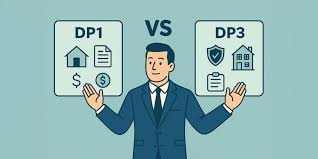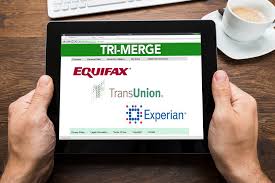The U.S. credit system can seem complex for Germans looking to immigrate to the U.S. and purchase a home. Unlike in Germany, creditworthiness in the U.S. is based on a credit history, which needs to be carefully built to access financing, such as mortgages. However, even as a foreign national, there are ways to quickly establish a strong foundation in the U.S. credit system and make the dream of owning a home a reality.

How to Establish Credit as a New Immigrant in the U.S.
Immigrating to the United States is an exciting journey filled with new opportunities. One of the key steps to thriving financially in your new home is building a strong credit history. Credit is essential for renting an apartment, securing loans, purchasing a home, or even getting the best rates on insurance. If you’re new to the U.S., here’s a step-by-step guide to help you establish credit effectively.
1. Understand the Importance of Credit in the U.S.
In the U.S., your credit history reflects your financial trustworthiness. Credit scores range from 300 to 850, with higher scores indicating better creditworthiness. Lenders, landlords, and even some employers use your credit score to evaluate your reliability. Without a credit history, it can be challenging to access certain financial opportunities, which is why starting to build credit early is crucial.
2. Apply for a Social Security Number (SSN) or Individual Taxpayer Identification Number (ITIN)
To start building credit, you’ll typically need a Social Security Number (SSN). If you’re not eligible for an SSN, you can apply for an Individual Taxpayer Identification Number (ITIN) through the IRS. Both numbers are critical for applying for financial products and establishing your credit history.
3. Open a Secured Credit Card
One of the easiest ways to begin building credit is by opening a secured credit card. A secured credit card requires a refundable deposit that serves as your credit limit. For example, if you deposit $500, your credit limit will be $500.
Steps to Get a Secured Credit Card:
- Research banks or credit unions that offer secured credit cards to individuals with no credit history.
- Choose a card with low fees and ensure the issuer reports to all three major credit bureaus: Experian, Equifax, and TransUnion.
- Use your secured credit card for small purchases and pay off the balance in full each month to demonstrate responsible use.
A secured credit card is an excellent starting point because it minimizes risk for lenders while allowing you to build credit.
4. Establish a Minimum of Two Trade Lines
A trade line is any account that appears on your credit report, such as a credit card or loan. To establish a robust credit profile, aim to open and maintain at least two trade lines. This diversity shows lenders that you can manage multiple credit accounts responsibly.
Options for Your Second Trade Line:
- Retail Credit Cards: Some retail stores offer credit cards that are easier to obtain than traditional credit cards.
- Credit Builder Loans: These loans are specifically designed to help individuals build credit. They work by holding the loan amount in a savings account while you make regular payments. Once the loan is paid off, you receive the funds.
- Authorized User Status: If a family member or friend with good credit adds you as an authorized user to their credit card account, you’ll benefit from their positive credit history. Ensure the account is in good standing before requesting to be added.
5. Monitor Your Credit Regularly
Once you’ve established credit accounts, it’s essential to monitor your progress. Free tools like Credit Karma or annual credit reports from AnnualCreditReport.com allow you to review your credit history. Check for inaccuracies and dispute any errors that might harm your score.
6. Practice Good Credit Habits
To build and maintain a strong credit score, follow these best practices:
- Pay Bills on Time: Payment history is the most significant factor in your credit score, accounting for 35% of it.
- Keep Credit Utilization Low: Aim to use less than 30% of your available credit limit.
- Avoid Opening Too Many Accounts: Each application for credit results in a hard inquiry, which can temporarily lower your score. Only apply for new accounts when necessary.
- Don’t Close Old Accounts: The length of your credit history impacts your score, so keep older accounts open even if you don’t use them frequently.
7. Consider Alternative Credit-Building Tools
If you’re struggling to qualify for traditional credit products, explore alternative tools to build credit:
- Rental Payment Reporting: Some services allow you to report your rent payments to the credit bureaus, helping you establish credit without a credit card.
- Utility Bills: Similar to rent, some programs enable you to report utility payments to build credit.
8. Be Patient
Building credit takes time. A strong credit history typically requires at least six months of on-time payments. Stay consistent, and over time, you’ll see your efforts reflected in your credit score.
Final Thoughts
Establishing credit as a new immigrant in the U.S. may seem challenging, but it’s entirely achievable with the right steps. By starting with a secured credit card, opening at least two trade lines, and practicing responsible credit habits, you’ll be on your way to building a solid financial foundation. Remember, credit is not just about access to loans; it’s about creating opportunities for your future in the U.S.
Feel free to ask us questions we look forward to helping you.








